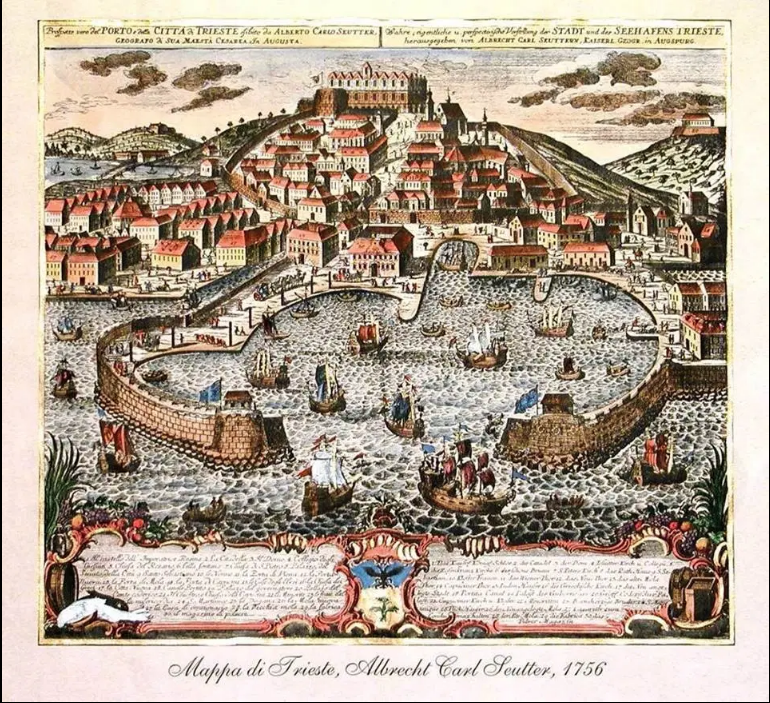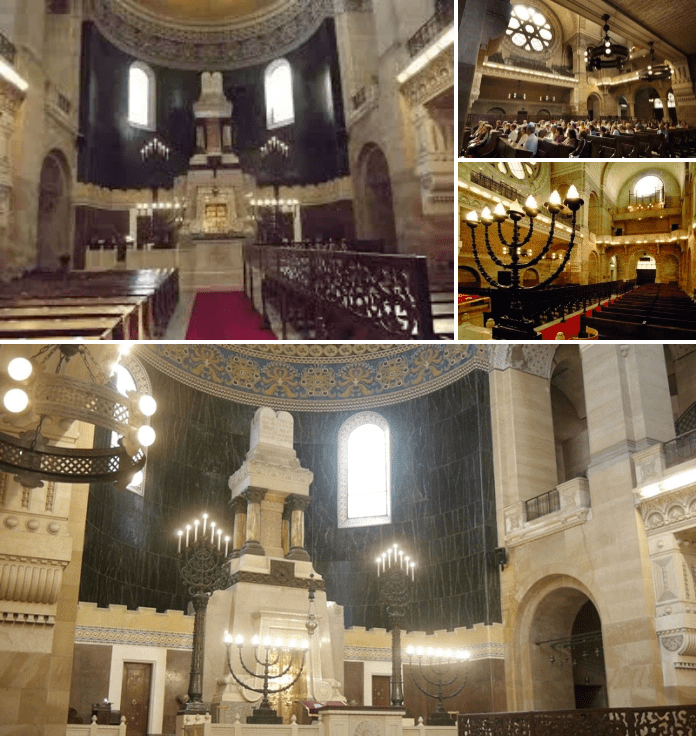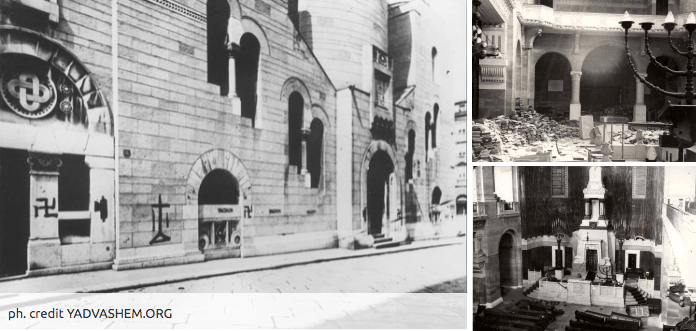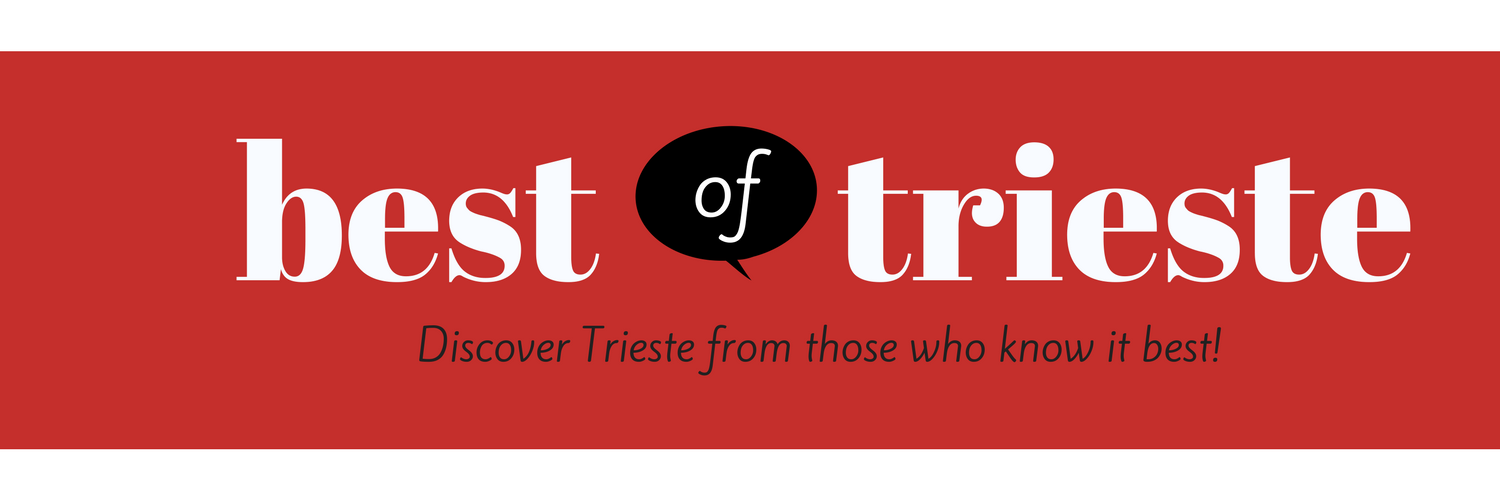
With the high holy days upon us, my thoughts turn to the majestic Synagogue of Trieste. It comes alive this time of year as local Jews gather to celebrate Rosh Hashanah (“Jewish New Year”) and Yom Kippur (“Day of Atonement”); In fact, the Synagogue will be closed to visitors for the next month (until October 11). But once the holidays have passed make sure to pay a visit. Growing up in New York, the holidays were solemn and observed with school closings so that even for non-Jews, they marked an important milestone in the calendar.
Once the great port of the Austro-Hungarian Empire and located at the crossroads of Mittle-Europe, Trieste was and has always been a multi-ethnic, multi-cultural hub. Here it’s easy to find diverse places of worship that date back to when Maria Theresa and her son Emperor Joseph II ruled over the city. In an attempt to move towards “an ideal enlightened state” Joseph II introduced, in 1782, the Edict of Tolerance, which extended religious freedoms to non-catholics living in Hapbsurg held lands. Trieste is in fact home to the beautiful blue domed Serbo-Orthodox Church of San Spiridione, to San Nicolo’, the Greek Orthodox Church on the waterfront, and to the Lutheran Church, to name just a few. One standout that I had always wanted to visit was the Synagogue of Trieste. Recently opened to the public in honor of the European Day of Jewish Culture, I finally had a chance to go inside and learn more about it.

We know the history of Jews in Trieste goes back over 800 years thanks to a document dated 1236, which makes mention of a first Jewish settlement in Trieste and one of it’s leaders, Daniel David. When Trieste sided with Austria in 1382, many Jews from Germany moved to Italy. Several served the nobility of Austria and held important positions within the Court. The Edicts of Tolerance did much to dismantle many — but certainly not all — of the legal and discriminatory barriers against Jews performing certain professions, and lifted Jewish dress laws, Jewish-only taxes, and some restrictions on the movement of Jews. Most in Trieste’s Jewish community were Ashkenazi until the arrival of a group of Sephardic Jews from Corfu in 1830. By 1919, the Jewish population of Trieste reached 6,000. Jews in Trieste had become more and more important to the economic and cultural growth of the city. Excelling in humanities, commerce, industry and fueling the growth of banking, shipping and insurance, Jews held important political offices and were instrumental in founding or leading of important companies like Assicurazioni Generali, RAS and Lloyd Adriatico that became the economic backbone of Trieste and the source of its wealth, growth and philanthropic activities. Trieste owes a lot of its greatness to the Jewish community which also gave birth to Italo Svevo and Umberto Saba considered towering figures in the literary world and proudly seen as “sons” of Trieste.
At it’s height, the Jewish community had 4 synagogues, “unassuming from the outside but richly decorated” inside. By the late 1800s, the Jewish community was so well integrated that their desire to bring together their entire community led to the creation of a single synagogue. In 1910 it was decided that this community should have a place of worship that reflected their prosperity and their equality with the gentile community. Designed by the leading architects of the time, Ruggiero and Arduino Berlam, the synagogue was inaugurated in 1912 in the presence of Prince Konrad Hohenlohe-Schillingsfürst, imperial lieutenant of Trieste.

The Great Synagogue of Trieste is one of the largest in Europe. It is located in the small piazza on via San Francesco D’Assisi not far from the famous Caffe’ San Marco. Its exterior décor proudly depicts stars of David and pays tribute to the Syriac tradition. Inside, it more closely resembles traditional basilica with 4 naves supporting a cupola and stained glass “rosoni” (rose windows) and even an organ which is quite uncommon in a synagogue.
The whole room is orientated towards a monumental Aron-Ha-Kodesh with enormous copper doors. On top are four columns surrounding a larger pink granite one upon which rests a pedestal showcasing the 10 Commandments tablets. At its sides, two big bronze menorahs with seven branches each, rest on a marble balustrade with depictions of wheat-sheafs, which are symbols of the Community of Trieste. From the ceiling hang imposing and elegant pendants lights. The dome of the cupola has intricate and colorful mosaic like decorations of geometrical patterns, trees and stars and on the great arches there are banners quoting verses from the book of the Psalms and bas reliefs of trees of life.
Above the main area, on three sides, is a large balcony which used to be the women’s gallery, but is no longer used because it needs restoration and there are simply not enough members to fill it. Above the entrance door and under a barrel vault, there is a majestic organ with pipes framed by stars of David.

In 1938, Fascist and racist legislation was introduced in Italy. Attacks on Jews were on the rise and the Nazi threat prompted those with means to try to escape. By 1940, half of the city’s Jews had left, although some stayed behind and converted. Many families were able to successfully hide their ritual silvers and treasures in a hidden room in the Synagogue, which was only discovered after the war. Italian Fascists desecrated the synagogue in 1942. It was then used to store works of art and books during the Nazi occupation, although it was rumored that Hitler wanted to convert the Synagogue into a pool.
After World War II around 1,500 Jews remained in Trieste, they restored the Synagogue and renewed Jewish communal institutions; in 1965 their number fell to 1,052. Today the Jewish Community counts about 700 members. The Jewish community of Trieste today represents the organizational structure of the association of Jewish people living in Trieste. The organization was established in order to provide for the needs of the Jewish community.
Synagogue : Via San Francesco, 19 Trieste
+39 040 371466
Museum: Museo della Comunità ebraica “Carlo e Vera Wagner”
Via del Monte, 5 Trieste
+39 040 633819
for more information

